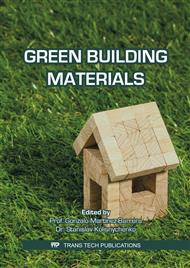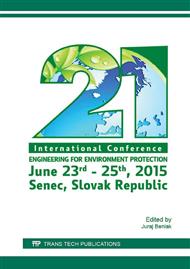[1]
Deren, Y., Soheil, N., Laureano, R. H., & Anand, J. P. (2011). Evaluation and mix design of cement-treated base materials with high content of reclaimed asphalt pavement. Transportation Research Record, 2212, 110–119.
DOI: 10.3141/2212-12
Google Scholar
[2]
Ebrahimi, A., Kootstra, B. R., Edil, T. B., & Benson, C. H. (2012). Practical approach for designing flexible pavements using recycled roadway materials as base course. Road Materials and Pavement Design, 13(4), 731–748.
DOI: 10.1080/14680629.2012.695234
Google Scholar
[3]
Hyzl, P., Varaus, M., Stehlik, D., & Zdralek, P. (2009).
Google Scholar
[4]
Jullien, A., François, D., Lumičre, L., de Larrard, F., & Chateau, L. (2010). Alternative materials for roads: A national database to share knowledge. Road Materials and Pavement Design, 11(1), 203–212.
DOI: 10.3166/rmpd.11.203-212
Google Scholar
[5]
Karaskova, S., Florian, A., & Pencik, J. (2009a). Computer simulation for calibration of cyclic-load triaxial test. 11th professional conference Juniorstav 2009, Brno, Czech Republic.
Google Scholar
[6]
Molenaar, A. A. A., Xuan, D. X., Houben, L. J. M., & Shui, Z. H. (2011).
Google Scholar
[7]
Stehlik, D., & Hyzl, P. (2007, June 20–22). Aspects concerning the design and performance of recycled base courses. International conference on Advanced Characterisation of Pavement and Soil Engineering, Athens, Greece.
Google Scholar
[8]
Stehlik, D., Hyzl, P., Varaus, M., Valentin, J., & Mondschein, P. (2010).
Google Scholar
[9]
Stehlik, D., Pecha, K., & Pacha, P. (2012). Recycled waste building materials to bound mixtures of the pavements. 2nd international conference ISAP 2012. Fortaleza, Brasil.
Google Scholar
[10]
Stehlik, D., Varaus, M., & Hyzl, P. (2013). Monitoring of experimental sections with recycled waste materials. 5th international conference on structural engineering, mechanics and computation. Cape Town, South Africa.
Google Scholar
[11]
Tam, V. W. Y., & Tam, C. M. (2006). A review on the viable technology for construction waste recycling. International Journal of Resources, Conservation & Recycling, 47, 209–221.
DOI: 10.1016/j.resconrec.2005.12.002
Google Scholar
[12]
Xuan, D. X., Houben, L. J. M., Molenaar, A. A. A., & Shui, Z. H. (2012). Mechanical properties of cement treated aggregate material – A review. International Journal of Materials and Design, 33, 496–502.
DOI: 10.1016/j.matdes.2011.04.055
Google Scholar



